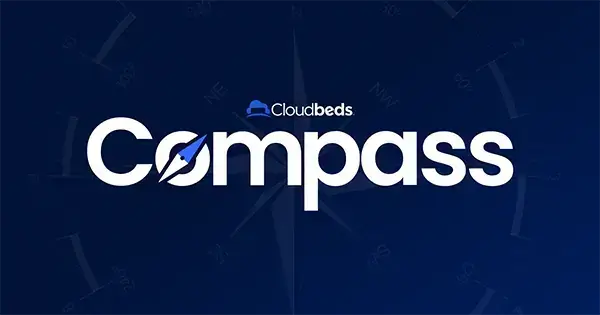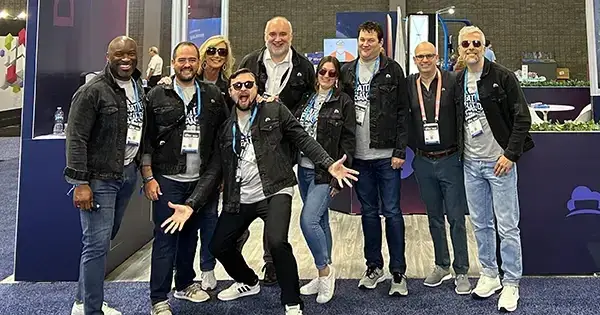
By Nancy Huang
Remote work has opened up new opportunities for travelers and employees worldwide. For the first time in modern history, a growing group of people can not only work from home, but work from anywhere. The telecommute and virtual classroom trend started to emerge several years ago but has taken on accelerated, widespread adoption due to the onset of the 2020 Coronavirus pandemic. Two in five Americans (41%) are now able to work or study from home at least some of the time, according to a study from Airbnb. In another survey commissioned by Airbnb, 35% of respondents said it will become more common post-pandemic for people to relocate to new places so they can take advantage of working remotely.
Meanwhile, remote work has also disrupted our normal routines. While we used to get outside, commute to an office, eat lunch with coworkers, and stop by a colleague’s desk, many of us are now confined to our homes. The combination of back-to-back Zoom calls, months-long lockdowns, and staring at the same walls day in and day out has amplified our desire to shake off our seemingly endless workday and go somewhere, anywhere – preferably with palm trees and tropical drinks.
Despite what some pundits predicted early in the pandemic, there has been no long-term shift in people’s desire to travel. If anything, our dependence on travel has only grown, as evidenced by the idea of “revenge travel.” With each roadblock and hurdle that has presented itself, pent-up travel demand – the yearning desire for people to get out and experience new places – has multiplied.
All of this is leading to a new trend all hosts and hoteliers should plan for: workcations. Workcations refer to the blurring lines between traveling for business or pleasure and the fact that more people are combining the two.
“People are scrambling to make up for lost vacations,” Kayak CEO Steve Hafner told Fortune. “Now that most can work from anywhere, who wouldn’t want to work from a beach in Hawaii?”
A Priceline survey revealed that 60% of Americans say that remote work has encouraged them to blur lines and take more workcations. Additionally, a Vrbo survey revealed that 67% of travelers who took a “flexcation” during the pandemic would do it again.
What is a Workcation?
A workcaion, or a workation as it’s sometimes spelled, is when people combine work and time off to take either short-term or extended working vacations. This travel trend has exploded over the last year as travel restrictions have lifted and the number of remote workers has grown.
In the past, it was mostly freelancers who were able to live as digital nomads and change their work environment freely. But, for now at least, remote work is becoming part of the new normal and those who have the flexibility and desire for a change of scenery can make a workspace from anywhere with unlimited access to wi-fi.
What is the difference between workcation and bleisure travel?
Workcations and bleisure travel are both similar concepts in that they combine work and play in one trip. However, bleisure travel typically relates to extending a business trip by taking days off to get to know a destination, while a workcation is more like a vacation you take where you enjoy some time off and then extend your stay to continue working remotely for an extended period of time.
Workcations are more flexible because remote workers aren’t tethered to an office so they can stay in a destination to work and play at their leisure. Bleisure trips have a more finite start and end date since the worker needs to return home to go back to a physical office location.
What’s driving the workcations trend?
Prior to the pandemic, weekend getaways were one of the most popular types of trips, but that trend has since flipped.
As people book workcations in a new age of travel, they are demanding longer stays. In fact, 68% of the flexible-rental sector is seeing more demand for extended stays, according to a report from AltoVita. Additionally, a GlobalData poll revealed that 26% of travelers prefer stays of 10+ nights. What’s more, from July to September 2021, one in five nights booked on Airbnb were for stays of a month or longer, according to the company’s CEO. Nearly half of the nights booked were for stays of a week or longer.
In addition to travelers’ newfound flexibility, travel experts point to pent-up demand and the desire to get away from the stresses of the pandemic as the main factors driving the workcations trend. In the earlier pandemic days when stricter travel restrictions were still in place, there was a rise in staycation bookings, with people renting vacation homes or hotel rooms in their own, or perhaps a neighboring, city just to get out of the house. But as more companies went remote the hospitality industry saw a pick up in workcations and that is reflected in the longer travel stays.
5 tips to prepare your property for workcation guests
It’s clear that workcations will continue to be great options to curb people’s appetite for travel and desire for work-life balance even beyond the pandemic.
Here are five ways to prepare for the travel industry’s latest new wave of demand.
1. Appeal to travelers booking longer stays
Longer stays have become popular enough that Booking.com has recently introduced a Work-Friendly Program to promote ideal “workcation” properties. The program is designed to help home-type properties on Booking.com increase revenue by attracting business travelers or travelers who might want to work remotely. Similarly, Airbnb has introduced tools to help give travelers more flexibility to book these types of trips.
To take advantage of the increased demand for longer stays, you can set discounted weekly and monthly rate plans (minimum of 10% recommended), which should reflect your savings from room turnover costs such as housekeeping.
2. Provide the right amenities
Guests on a workcation require certain amenities. Most importantly, they need a strong and reliable wireless internet connection. They also need desks, comfortable chairs, and lighting suitable for working on a laptop. Long-stay guests also typically prefer having the option to cook, so highlight kitchen amenities, if they are available, as well as any play areas for families with children.
Make sure your website and other marketing materials showcase these amenities with supporting photos. Even more important, make sure you deliver on the amenities you advertise so you can provide a positive guest experience and in turn get positive reviews.
3. Focus on the flexibility
Consider how you can add value for guests once they’re on your property. Remember that many guests have more flexibility than ever before. That means they have the flexibility to further extend their stays or move onto their next destination. For example, if you have other properties within your portfolio, you can get guests excited to travel to a new destination, on a trip that includes a stay at one of your other locations.
Consider ways you can improve the longer-term guest experience outside of your hotel. This can be as simple as providing restaurant and attraction recommendations to working with local activities providers to offer special tour packages or discounted gym memberships to your guests.

4. Maintain a targeted strategy
Review your marketing and pricing strategies to make sure you’re appealing to and communicating with the right customers at the right time in their digital guest journeys. One way to bolster your marketing strategy is to lean into social media to grow your brand as a haven for workcationers.
To maximize your revenue potential, create competitive rate plans and pricing strategies. For example, you can create a special “Stay Pay” rate plan to encourage your guests to stay for a longer period by adding a discount or free nights for a longer stay during periods when you would typically have low occupancy.
Make sure to list your property on the channels this guest segment is using for search. That means you may have to expand the number of OTAs and distribution partners you work with to get more bookings. For example, in addition to listing your inventory on Airbnb, you can connect to other smaller, niche distribution partners, many of which charge less commission.
5. Tap into tech
As you prepare your property for new and emerging guest demands and travel trends, look to automate workflows and operations wherever you can. That’s especially important as the lodging industry continues to navigate labor shortages. It’s now easier than ever to run a property remotely, especially short-term rental units and vacation homes, by using accessible contactless technology like mobile entry and self-check-in apps.
Look for solutions that are cloud-based, user-friendly, and include all the tools you need to run your lodging business in one integrated platform so you can place your focus on delivering a memorable guest experience.

















